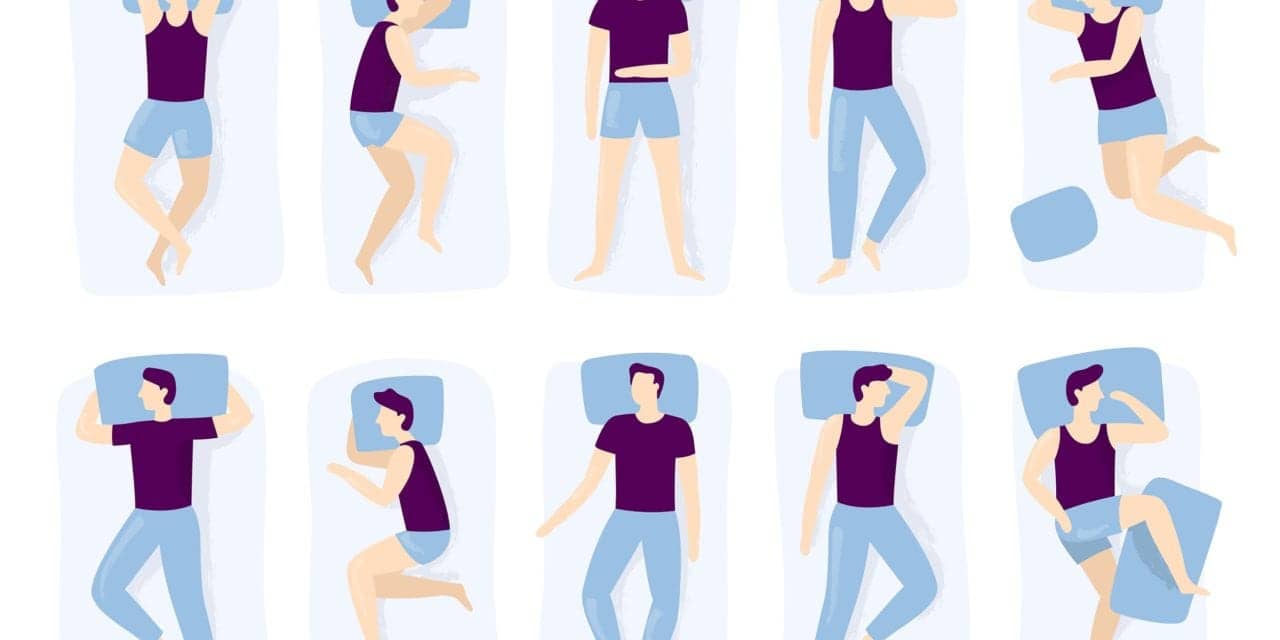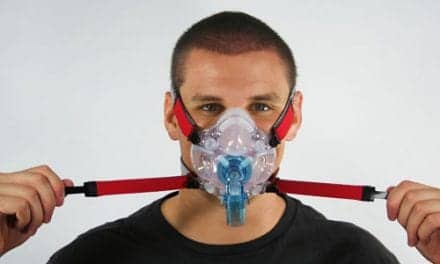New sleep apnea interfaces offer different tube placements, tubing characteristics, and seal technologies to accommodate those who move around during their sleep.
By Lindsey Nolen
A CPAP device delivers its pressured air via an interface that connects to the user’s nose and/or mouth, keeping their airways open during sleep. But in attaching to the machine, the interface, commonly referred to as a CPAP mask, can become limiting in terms of movement. For some sleep apnea patients, this makes sleeping with a CPAP mask challenging and may even deter them from continuing treatment. How can sleep medicine professionals help patients who change positions during their sleep find a CPAP mask that accommodates them? Manufacturers respond to this challenge with innovative solutions.
“At Philips, we launched the DreamWear line of masks, which places the air tube connection at the top of the head to provide greater freedom of movement throughout the night and a more comfortable sleeping experience,” says Kevin Coldren, sleep solutions leader at Philips. “The mask features minimalist tubing that runs from the top of the head to under the nose, so users can have the freedom to sleep in the position they’re most comfortable in.” Philips designed its DreamWear line—where airflow travels through the mask frame to the hose on top of the head—so that one side can be flattened and the wearer will still receive adequate therapy via airflow on the opposite side of the frame.
Fisher & Paykel Healthcare is working to enhance mobility as well. “Around 2007, Fisher & Paykel released the Opus 360 mask, which had a tube placed overhead. However, the real breakthrough with positional freedom came with the invention of RollFit technology, first launched with the F&P Simplus full face mask,” says Matt Caughey, category marketing manager—OSA product management at Fisher & Paykel.
In F&P’s RollFit technology, the walls of the mask cushion and the sealing surfaces are designed to decouple any external force to cause movement on the sealing surface. A rolling silicone element relieves pressure on the bridge of the nose, and “it is also designed to keep the seal stable and in place while patients move during the night, ie designed to adjust and seal dynamically, irrespective of the hose orientation,” Caughey says. “Fundamentally, the cushion sealing surfaces and structural stability of the overall mask are critical in maintaining a consistent seal given a variety of facial geometries and patient’s movement.”
Sleep diagnosis and therapy company ResMed reinvests 7% to 8% of yearly revenue into research and development. “Patient needs and preferences related to movement are one of several that we explore when designing the next generation of CPAP products to help maximize patient adherence and satisfaction, as well as efficiencies for [home medical equipment companies] and sleep labs,” says Annie McBride, ResMed’s vice president marketing of Sleep North America.
In the past year, ResMed released four new masks. These include its “Freedom” category of tube-up masks (AirFit P30i, N30i, and F30i), designed to help users sleep in any position.
Other features also allow for movement during sleep. “Over the years, the design of the tubes has become more flexible, including added comfort settings such as our ClimateLine heated tubing,” McBride says. “Plus, ResMed mask connectors or ‘elbows’ allow the tube to swivel 360 degrees, so users have the freedom to move during sleep without bending or knotting the tube. We have been seeing users opt for longer tubing to give them more freedom of movement during sleep positioning changes.”
Launched in March 2019, new CPAP interface company Bleep Sleep markets its DreamPort Sleep Solution, which connects directly to the nose with tubing that hangs off the face via adhesive surgical tape that creates a flush seal on the nostrils to prevent air leaks, according to the company. Alan Greene, RRT, chief marketing officer at Bleep Sleep, says “The DreamPort is leak free in any position the patient chooses.”
Full face mask marketer Hans Rudolph Inc is “constantly researching ways to improve our product offering, including patient comfort and freedom of movement,” says Nick Rudolph, Hans Rudolph’s sales and marketing manager. “Comfort has always been in mind with our models. We’re trying to fit the anatomical position of a patient’s face.” Its full face masks are made of one soft facepiece with internal sealing flanges, as opposed to a hard frame and cushion assembly, which the company says means less pressure apply is needed to achieve a seal.
Beyond positional freedom, sleep professionals and patients can expect more new mask features this year.
Philips, for one, has been working on technology to enhance and personalize the mask selection process. Later this year, the company expects to make available the Philips Respironics Mask Selector, a 3D scanning and sizing tool that recommends mask type, frame, and precise cushion size for the patient, based on each patient’s facial structure and size. “Patients are always seeking masks that provide them with greater comfort and more freedom of movement during sleep. These two factors greatly affect the adherence of CPAP therapy, so this is something we’re constantly working to enhance,” Philips’ Coldren says.
Fisher & Paykel’s Caughey says, “The future of CPAP masks and devices includes smaller, lighter, more stable, new innovative materials—which ultimately make CPAP therapy more effective and desirable for patients.” When designing new interfaces, he adds, “Our product development philosophy is very patient centric. Patient input, through research, is continually take into consideration for designing our new products. Freedom of movement is multi-faceted. For example, it can relate to minimizing the pull on the CPAP hose as the patient moves during the night, or it can relate to the ability to keep the seal stable during the night.”
Ultimately, when determining what mask will be the most comfortable for a patient, providers must understand the benefits of the different types of masks including full face masks, nasal masks, or nasal pillows masks, to determine what will work best for them. Everyone with sleep apnea has different needs—as do the clinicians who treat them.
Lindsey Nolen is a Jacksonville, Fla-based journalist who has been writing about healthcare for over 5 years.
How to Get CPAP Mask Samples
We asked the sources in this story how sleep professionals can obtain sample interfaces, such as those mentioned in this article. Their responses are below.
Fisher & Paykel: Contact your local sales representative or visit www.fphcare.com, navigate to the mask you are interested in (for example, www.fphcare.com/us/homecare/sleep-apnea/masks/vitera) and click “request a sample.”
Hans Rudolph: Email hri[at]rudolphkc.com.
Philips: Contact your Philips representative.
(Manufacturers did not pay to have their sample availability data included. Sleep Review is providing it as a reader service.)




